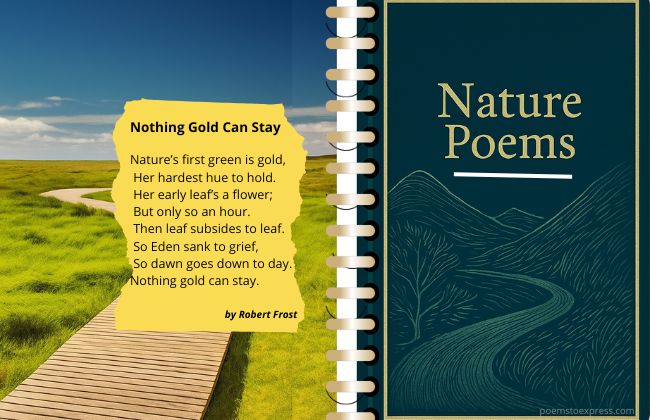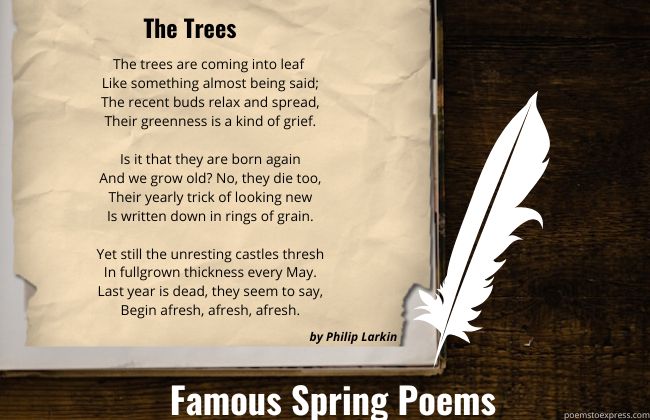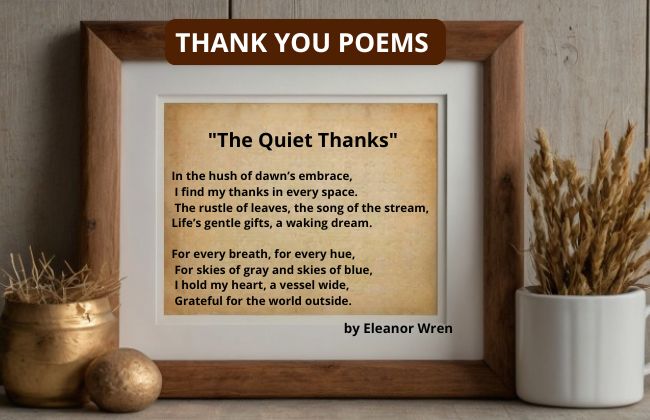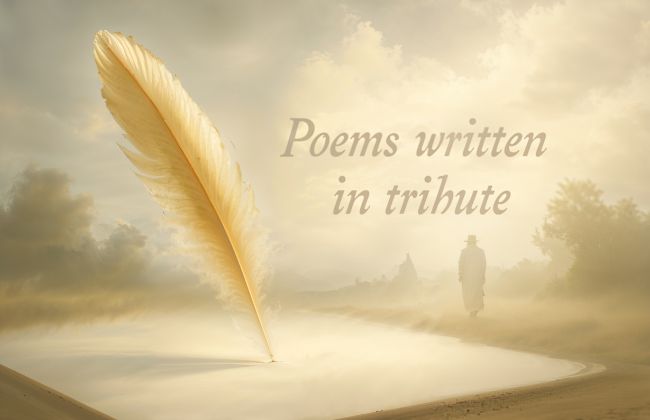Memorizing poetry has long been a cherished and intellectual pursuit, offering both cultural enrichment and a robust challenge for the memory.
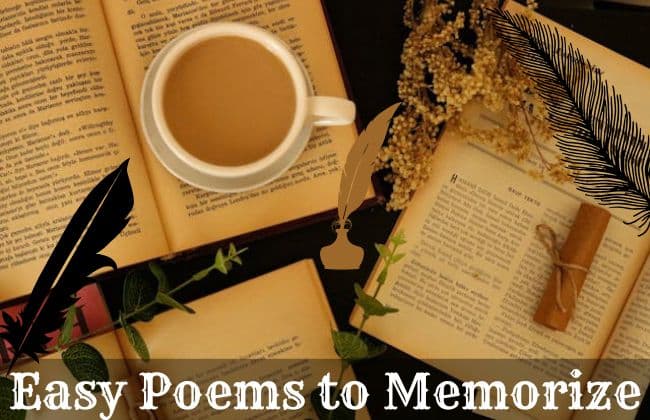
Easy poems to memorize are perfect for beginners or anyone looking to enhance their memory skills without feeling overwhelmed.
These short, simple verses often feature rhythmic patterns and memorable imagery, making them accessible and enjoyable to recite.
Whether you’re looking to impress friends, enrich your own understanding of literature, or simply enjoy the beauty of words, choosing the right poems can make all the difference.
From classic nursery rhymes to contemporary pieces, there is a wealth of material available that can be easily committed to memory.
In this article, we will explore a selection of easy poems that are perfect for memorization, highlighting their themes and why they resonate with readers of all ages.
Table of Contents
- 1 1) “Stopping by Woods on a Snowy Evening” by Robert Frost
- 2 2) “Hope is the thing with feathers” by Emily Dickinson
- 3 3) “Ozymandias” by Percy Bysshe Shelley
- 4 4) “Sonnet 18” – William Shakespeare
- 5 5) “The Road Not Taken” by Robert Frost
- 6 6) Hope Is Like A Harebell Trembling From Its Birth by Christina Georgina Rossetti
- 7 7) “Death, be not proud” (Holy Sonnet X) by John Donne
- 8 8) “A Dream Within a Dream” by Edgar Allan Poe
- 9 9) “Fire and Ice” by Robert Frost
- 10 10) The Swing by Robert Louis Stevenson
- 11 Step-by-Step Guide to Memorization
- 12 Benefits of Memorizing Poetry
1) “Stopping by Woods on a Snowy Evening” by Robert Frost
This piece is particularly well-suited for memorization due to its straightforward syntax and rhythmic pattern. Composed in 1922 and published in 1923 in his collection “New Hampshire,” the poem illustrates a moment of reflection as the speaker pauses during a tranquil snowfall.
The poem’s four stanzas adhere to a simple AABA rhyme scheme, creating a melodious quality that aids in recall.
Whose woods these are I think I know.
His house is in the village though;
He will not see me stopping here
To watch his woods fill up with snow.
My little horse must think it queer
To stop without a farmhouse near
Between the woods and frozen lake
The darkest evening of the year.
He gives his harness bells a shake
To ask if there is some mistake.
The only other sound’s the sweep
Of easy wind and downy flake.
The woods are lovely, dark and deep,
But I have promises to keep,
And miles to go before I sleep,
And miles to go before I sleep.
2) “Hope is the thing with feathers” by Emily Dickinson
In just a few lines, Dickinson captures the essence of hope’s persistence and its role in offering warmth and solace. The bird’s song remains sweetest amidst the fiercest winds, illustrating hope’s resilience.
Easy to commit to memory due to its simplicity and rhythmic qualities, this poem is an enduring testament to the human spirit’s capacity for optimism.
“Hope” is the thing with feathers -
That perches in the soul -
And sings the tune without the words -
And never stops - at all -
And sweetest - in the Gale - is heard -
And sore must be the storm -
That could abash the little Bird
That kept so many warm -
I’ve heard it in the chillest land -
And on the strangest Sea -
Yet - never - in Extremity,
It asked a crumb - of me.

3) “Ozymandias” by Percy Bysshe Shelley
Written in 1817 and published in 1818, the poem presents a profound message about the impermanence of power and the inevitable decline of all rulers through the ages.
The poem’s enduring appeal lies in its layered meaning and eloquent use of language, making it a compelling choice for memorization and reflection on the transient nature of human achievements.
I met a traveller from an antique land,
Who said—“Two vast and trunkless legs of stone
Stand in the desert. . . . Near them, on the sand,
Half sunk a shattered visage lies, whose frown,
And wrinkled lip, and sneer of cold command,
Tell that its sculptor well those passions read
Which yet survive, stamped on these lifeless things,
The hand that mocked them, and the heart that fed;
And on the pedestal, these words appear:
My name is Ozymandias, King of Kings;
Look on my Works, ye Mighty, and despair!
Nothing beside remains. Round the decay
Of that colossal Wreck, boundless and bare
The lone and level sands stretch far away.
4) “Sonnet 18” – William Shakespeare
Students and poetry enthusiasts often choose “Sonnet 18” for memorization due to its rhythmic structure and evocative imagery.
Memorizing this sonnet provides an opportunity to engage with quintessential English literature and appreciate the timeless artistry of Shakespeare’s love poetry.
Shall I compare thee to a summer’s day?
Thou art more lovely and more temperate:
Rough winds do shake the darling buds of May,
And summer’s lease hath all too short a date;
Sometime too hot the eye of heaven shines,
And often is his gold complexion dimm'd;
And every fair from fair sometime declines,
By chance or nature’s changing course untrimm'd;
But thy eternal summer shall not fade,
Nor lose possession of that fair thou ow’st;
Nor shall death brag thou wander’st in his shade,
When in eternal lines to time thou grow’st:
So long as men can breathe or eyes can see,
So long lives this, and this gives life to thee.
5) “The Road Not Taken” by Robert Frost
The structure and rhyme of the poem help facilitate its memorization, while the melancholic and reflective tone invites readers to consider the deeper implications of their own life choices.
This duality between the serious presentation of decisions and their subtly trivial nature makes the poem memorable, not only for its content but also for the mastery with which Frost handles poetic language and structure.
Two roads diverged in a yellow wood,
And sorry I could not travel both
And be one traveler, long I stood
And looked down one as far as I could
To where it bent in the undergrowth;
Then took the other, as just as fair,
And having perhaps the better claim,
Because it was grassy and wanted wear;
Though as for that the passing there
Had worn them really about the same,
And both that morning equally lay
In leaves no step had trodden black.
Oh, I kept the first for another day!
Yet knowing how way leads on to way,
I doubted if I should ever come back.
I shall be telling this with a sigh
Somewhere ages and ages hence:
Two roads diverged in a wood, and I—
I took the one less traveled by,
And that has made all the difference.
6) Hope Is Like A Harebell Trembling From Its Birth by Christina Georgina Rossetti
The poem invites reflection on the fleeting and sometimes painful nature of love and hope, and how these are upheld by faith.
This lyrical approach and rhythmic structure make the poem more accessible and memorable, aiding its recollection through its rich imagery and the emotional resonance it evokes.
Hope is like a harebell trembling from its birth,
Love is like a rose the joy of all the earth;
Faith is like a lily lifted high and white,
Love is like a lovely rose the world's delight;
Harebells and sweet lilies show a thornless growth,
But the rose with all its thorns excels them both.

7) “Death, be not proud” (Holy Sonnet X) by John Donne
Through a defiant tone, the poem diminishes death to a temporary state, comparing it to a sleep from which all will awaken on Judgment Day.
The use of imagery such as “rest and sleep” and the formal structure of the Petrarchan sonnet facilitate the poem’s memorization, while its rhyme and regular rhythm reinforce a sense of serenity and control over the subject matter.
Death be not proud, though some have called thee
Mighty and dreadful, for thou art not so,
For those whom thou think'st thou dost overthrow,
Die not, poor death, nor yet canst thou kill me.
From rest and sleep, which but thy pictures be,
Much pleasure, then from thee, much more must flow,
And soonest our best men with thee do go,
Rest of their bones, and soul's delivery.
Thou art slave to Fate, Chance, kings, and desperate men,
And dost with poison, war, and sickness dwell,
And poppy, or charms can make us sleep as well,
And better than thy stroke; why swell'st thou then?
One short sleep past, we wake eternally,
And death shall be no more; death, thou shalt die.
8) “A Dream Within a Dream” by Edgar Allan Poe
This poem reflects on the ephemeral nature of time and reality. It is structured into two stanzas, each evoking philosophical questions about the world and the human experience within it.
The poem’s meter and rhyme scheme contribute to its musical quality, making it memorable.
Take this kiss upon the brow!
And, in parting from you now,
Thus much let me avow —
You are not wrong, who deem
That my days have been a dream;
Yet if hope has flown away
In a night, or in a day,
In a vision, or in none,
Is it therefore the less gone?
All that we see or seem
Is but a dream within a dream.
I stand amid the roar
Of a surf-tormented shore,
And I hold within my hand
Grains of the golden sand —
How few! yet how they creep
Through my fingers to the deep,
While I weep — while I weep!
O God! Can I not grasp
Them with a tighter clasp?
O God! can I not save
One from the pitiless wave?
Is all that we see or seem
But a dream within a dream?

9) “Fire and Ice” by Robert Frost
Though the poem is concise, its brevity belies a rich symbolic texture and philosophical depth that has garnered critical acclaim. Frost’s dexterity with language manifests in tightly constructed lines that convey complex themes in a manner accessible to a wide audience.
These qualities make “Fire and Ice” not only a profound piece of literature but also a practical selection for those seeking to memorize a short yet impactful poem.
Some say the world will end in fire,
Some say in ice.
From what I’ve tasted of desire
I hold with those who favor fire.
But if it had to perish twice,
I think I know enough of hate
To say that for destruction ice
Is also great
And would suffice.
10) The Swing by Robert Louis Stevenson
“The Swing” by Robert Louis Stevenson is a poem that celebrates the childlike joy of swinging, capturing the thrill of soaring into the sky and looking out over the surrounding landscape.
The use of simple and vivid imagery, such as “rivers and trees and cattle,” allows readers to easily visualize the scenes, reinforcing the emotional connection and making the poem easier to remember.
How do you like to go up in a swing,
Up in the air so blue?
Oh, I do think it the pleasantest thing
Ever a child can do!
Up in the air and over the wall,
Till I can see so wide,
Rivers and trees and cattle and all
Over the countryside—
Till I look down on the garden green,
Down on the roof so brown—
Up in the air I go flying again,
Up in the air and down!
Step-by-Step Guide to Memorization
Memorizing a poem can seem daunting, but breaking the process down into manageable steps can make it much easier.
Here’s a comprehensive guide to help you commit any poem to memory effectively.
Read the Poem Aloud
- Initial Reading: Begin by reading the poem aloud several times. This helps you get a sense of the rhythm, tone, and overall structure.
- Understand the Meaning: Try to grasp the meaning of the poem. Understanding the context and emotions behind the words can make memorization easier.
- Identify Key Themes: Take note of recurring themes, symbols, and motifs. These elements can serve as mental anchors as you memorize the poem.
Break It Down into Sections
- Divide the Poem: Split the poem into smaller, manageable sections or stanzas. This makes the task less overwhelming and allows you to focus on one part at a time.
- Memorize One Section at a Time: Concentrate on memorizing one section thoroughly before moving on to the next. Repeat each section until you can recite it without looking at the text.
- Link Sections Together: Once you’ve memorized individual sections, start linking them together. Recite the first section, then add the second, and so on, until you can recite the entire poem.
Visualize the Poem
- Create Mental Images: Visualize the scenes, emotions, or actions described in the poem. Associating lines with vivid mental images can enhance recall.
- Use a Storyboard: If the poem tells a story, imagine it as a sequence of scenes, like a storyboard. This can help you remember the order and flow of the poem.
Use Mnemonic Devices
- Acronyms and Acrostics: Create acronyms or acrostics using the first letters of each line or stanza to aid memory.
- Rhymes and Rhythms: Pay attention to the poem’s rhyme scheme and rhythm. These patterns can serve as natural mnemonic devices.
- Chunking: Group lines or phrases into chunks. Memorizing smaller chunks can be easier than tackling long passages.
Practice Regularly
- Daily Recitation: Practice reciting the poem daily. Consistent repetition is key to transferring information from short-term to long-term memory.
- Write It Down: Write the poem out by hand. This engages different parts of your brain and reinforces memory.
- Test Yourself: Periodically test yourself by reciting the poem without looking at the text. Identify any trouble spots and focus on those areas.
Benefits of Memorizing Poetry
Memorizing poetry offers tangible benefits related to cognitive skills, language use, and personal development.
1. Improving Memory Skills
By committing poetry to memory, one engages multiple parts of the brain, which can enhance the brain’s capacity to store and retrieve information.
Here are specific ways in which poetry memorization supports memory:
- Repetition: Regular recitation reinforces neural pathways.
- Pattern Recognition: Identifying rhythmic and rhyming patterns aids recall.
2. Enhancing Language Proficiency
The language of poetry is often rich and expressive, providing an excellent medium for expanding vocabulary and understanding deeper nuances of language.
Here’s how memorizing poetry can enhance language skills:
- Vocabulary Building: Exposure to varied diction in poetry can introduce and reinforce new words.
- Comprehension: Interpreting meaning encourages analytical thinking about language use.
3. Emotional and Intellectual Growth
Poetry often explores complex themes and offers insights into the human condition, thus supporting emotional and intellectual development in the following ways:
- Empathy: Engaging with a poet’s emotions promotes understanding of diverse perspectives.
- Reflection: Analyzing thematic elements invites deeper consideration of life’s experiences.
You might also like:

